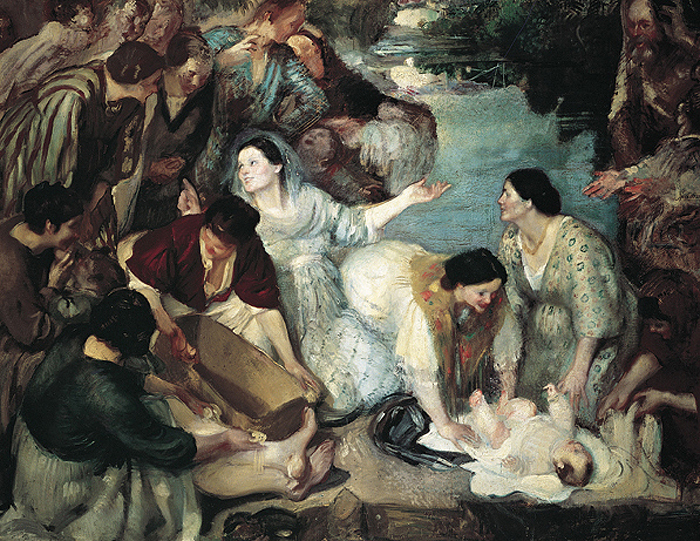Image Details

Scala/Art Resource, NY
Floating upon the waters of the Nile, the infant Moses is rescued by Pharaoh’s daughter and her attendants in a painting by Italian artist Armando Spadini (1883–1925), who renders his subjects in a distinctively 19th-century impressionistic style. In Exodus 1, Pharaoh, worried about the burgeoning Israelite population in his kingdom, orders all newborn Israelite boys thrown into the Nile. Fearing Pharaoh’s decree, Moses’ mother—whose name isn’t revealed in the early chapters of Exodus—places her three-month-old baby in a papyrus basket plastered with bitumen and pitch, and sets him adrift upon the river.
Accompanied by her attendants, Pharaoh’s daughter comes down to the river to bathe when she chances upon the basket and sends her maid to retrieve it. This is the first time a woman saves Moses’ life, and it won’t be the last. Nevertheless, when it comes time for Moses the savior to communicate his vision of Israel to the Israelites, he ignores the women of the congregation and speaks only to the men. In the accompanying article, author Tikva Frymer-Kensky shows that the biblical narrator subtly highlights Moses’ tunnel vision and records the heroism of the women of the Exodus.
